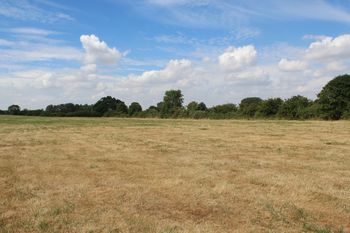Tickford Fields, North Crawley Road, Newport Pagnell, Milton Keynes, Buckinghamshire. Archaeological Evaluation (OASIS ID: cotswold2-342349)
Cotswold Archaeology, 2020. https://doi.org/10.5284/1081993. How to cite using this DOI
Data copyright © Cotswold Archaeology unless otherwise stated
This work is licensed under a Creative Commons Attribution 4.0 International License.
Primary contact
Cotswold Archaeology
Building 11
Kemble Enterprise Park
Cirencester
GL7 6BQ
UK
Tel: 01285 771022
Fax: 01285 771033
Resource identifiers
- ADS Collection: 3819
- DOI:https://doi.org/10.5284/1081993
- How to cite using this DOI
Introduction

Between July and September 2018, Cotswold Archaeology undertook an archaeological evaluation in two stages at Tickford Fields. The work was carried out to inform an upcoming planning application for the residential development of the site.
The evaluation comprised the excavation of 147 trenches. The evaluation identified archaeological remains across the site, with a slightly higher concentration of findings within the northern part of the site. Although a number of these features remain undated, the majority can be attributed to one of five broad periods, the prehistoric, Roman, medieval, post-medieval and modern periods. The results of the evaluation correlated well with the preceding geophysical survey, which identified a number of anomalies representing potential archaeological features, which comprised rectilinear, linear and discrete anomalies, indicative of enclosures, agricultural ditches, furrows, boundary features, trackways and pits.
The earliest activity identified on site comprised two Neolithic flints and four flints broadly attributable to the Neolithic/Early Bronze Age. The artefactual evidence suggests that permanent settlement occurred within the northern area of the site during the medieval period. The medieval evidence comprised enclosures, field system ditches and further settlement features. Structural remains, in the form of possible medieval ovens, stone walls, which may indicate the location of the 17th-century tomb of Mark Slingsby and metalled surfaces were identified within the western part of the site. Features associated with medieval, post-medieval and modern agricultural land use were also recorded, as well as extensive areas of quarrying.





